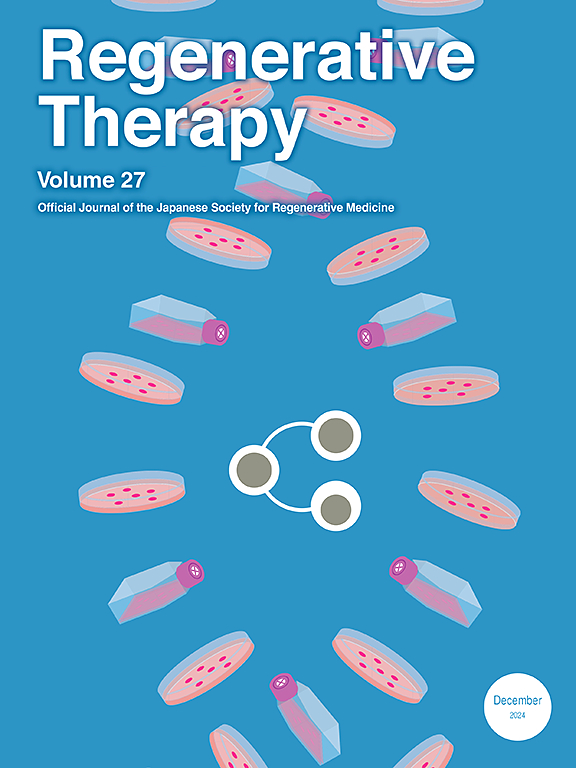Microbiome-derived bile acids as endogenous regenerative mediators in liver repair
IF 3.5
3区 环境科学与生态学
Q3 CELL & TISSUE ENGINEERING
引用次数: 0
Abstract
The liver's extraordinary capacity for self-repair is often compromised by chronic injury, fibrosis, or extensive resection, creating an urgent need for innovative regenerative therapies to restore liver function. Emerging evidence suggests that microbiome-derived bile acid metabolites are potent endogenous mediators of hepatic regeneration. Beyond their canonical role in lipid emulsification, these chemically diverse molecules engage nuclear and membrane receptors, most notably the farnesoid X receptor (FXR) and Takeda G protein-coupled receptor 5 (TGR5), to stimulate hepatocyte proliferation, modulate inflammatory responses, and reactivate quiescent progenitor cells. In this review, we integrate mechanistic insights from partial hepatectomy, germ-free, and antibiotic-treated animal models with early clinical observations to illuminate how primary and secondary bile acids orchestrate cell cycle progression, cytokine balance, and extracellular matrix remodeling. We then examined the therapeutic landscape, from synthetic FXR/TGR5 agonists to live-biotherapeutic approaches, genetically modified probiotic strains, and fecal microbiota transplantation. We highlight the preliminary indicators of efficacy and challenges in manufacturing consistency, safety profiling, and regulatory classification. We address the interindividual variability in microbiome composition, potential biomarkers such as serum FGF19, imaging-based measures of functional liver mass, and considerations for optimal trial design. This is the first comprehensive review to frame microbiome-driven bile acids as direct modulators of liver regeneration and chart a coherent translational development pathway. By integrating stem cell biology, hepatology, microbiology, and bioengineering perspectives, we demonstrate the underexplored therapeutic potential of these approaches to transform the future of hepatic repair.
微生物源胆汁酸作为内源性再生介质在肝脏修复中的作用
肝脏非凡的自我修复能力经常因慢性损伤、纤维化或广泛切除而受到损害,因此迫切需要创新的再生疗法来恢复肝功能。新出现的证据表明,微生物群衍生的胆汁酸代谢物是肝脏再生的内源性有效介质。除了它们在脂质乳化中的典型作用外,这些化学上不同的分子参与核和膜受体,最明显的是farnesoid X受体(FXR)和Takeda G蛋白偶联受体5 (TGR5),以刺激肝细胞增殖,调节炎症反应,并重新激活静止的祖细胞。在这篇综述中,我们将来自部分肝切除术、无菌和抗生素治疗动物模型的机制见解与早期临床观察结合起来,阐明初级和次级胆汁酸如何协调细胞周期进程、细胞因子平衡和细胞外基质重塑。然后,我们研究了治疗前景,从合成FXR/TGR5激动剂到活生物治疗方法,转基因益生菌菌株和粪便微生物群移植。我们强调了有效性的初步指标和制造一致性,安全性分析和监管分类方面的挑战。我们研究了微生物组组成的个体间差异、潜在的生物标志物(如血清FGF19)、基于成像的功能性肝脏质量测量,以及优化试验设计的考虑因素。这是第一个全面的综述框架微生物驱动胆汁酸作为肝脏再生的直接调节剂,并绘制了一个连贯的翻译发展途径。通过整合干细胞生物学、肝病学、微生物学和生物工程的观点,我们展示了这些方法未被充分开发的治疗潜力,以改变肝脏修复的未来。
本文章由计算机程序翻译,如有差异,请以英文原文为准。
求助全文
约1分钟内获得全文
求助全文
来源期刊

Regenerative Therapy
Engineering-Biomedical Engineering
CiteScore
6.00
自引率
2.30%
发文量
106
审稿时长
49 days
期刊介绍:
Regenerative Therapy is the official peer-reviewed online journal of the Japanese Society for Regenerative Medicine.
Regenerative Therapy is a multidisciplinary journal that publishes original articles and reviews of basic research, clinical translation, industrial development, and regulatory issues focusing on stem cell biology, tissue engineering, and regenerative medicine.
 求助内容:
求助内容: 应助结果提醒方式:
应助结果提醒方式:


